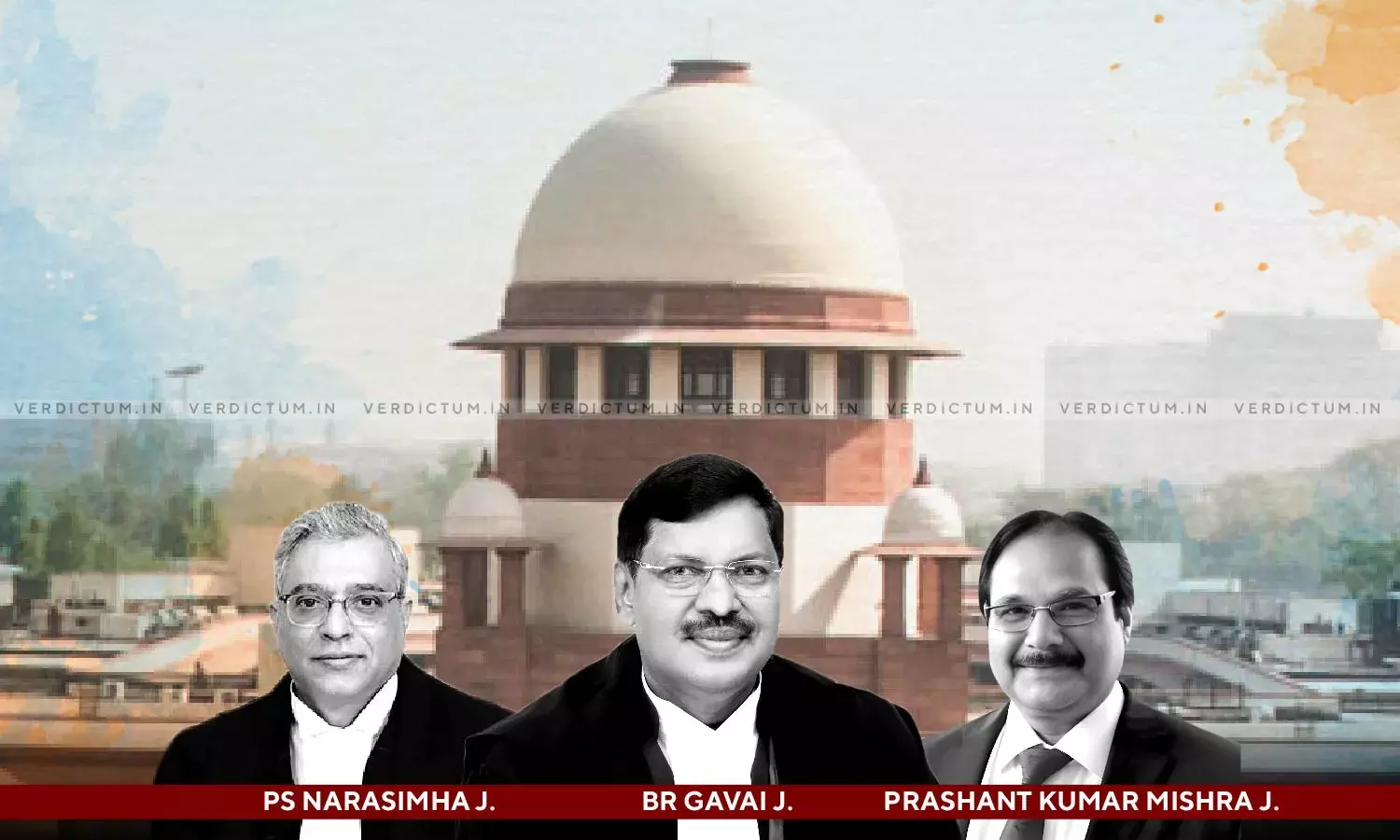Environmental Bodies Must Function Vibrantly; Must Be Assisted By Robust Infrastructure & Human Resources: SC Issues Directions

The Supreme Court has issued several directions to ensure that environmental bodies function vibrantly, and are assisted by robust infrastructure and human resources.
The court directed the Central Empowered Committee (CEC) to adopt some measures to promote institutional transparency, efficiency, and accountability in its functioning. It has ordered CEC to formulate guidelines for conduct of its functions and internal meetings.
The Court’s judgment was in the context of institutionalisation and reconstitution of CEC.
The three-Judge Bench comprising Justice B.R. Gavai, Justice P.S. Narasimha, and Justice Prashant Kumar Mishra said, “The role of the constitutional courts is to ensure that such environmental bodies function vibrantly, and are assisted by robust infrastructure and human resources. The constitutional courts will monitor the functioning of these institutions so that the environment and ecology is not only protected but also enriched.”
The Bench reiterated the importance of ensuring the effective functioning of the environmental bodies being imperative for the protection, restitution, and development of the ecology and said that the role of the constitutional courts is to monitor the proper institutionalisation of environmental regulatory bodies and authorities.
The Apex Court, therefore, issued the following directions:
i. The CEC shall formulate guidelines for the conduct of its functions and internal meetings. The CEC shall formulate the operating procedures delineating the roles of its members and the Secretary of the CEC.
ii. The CEC shall formulate guidelines about the public meetings that it holds, ensure the publication of meeting agenda in advance on its website, maintain minutes of meetings, and set out rules regarding notice to parties.
iii. The CEC shall formulate guidelines for site visits and, if necessary, hearing the public and affected parties therein.
iv. The CEC shall formulate guidelines fixing time limits for site visits, preparation of reports, and also the manner of preparation of reports.
v. These guidelines/regulations must be accessible for anyone to seek. They shall be posted on the official website of the CEC.
“We may ask a simple question – how effectively are these environmental bodies functioning today? This question has a direct bearing on the protection and restoration of ecological balance”, it noted.
The Court observed that as environmental governance through these bodies emerges, the obligation of the constitutional courts is even greater and hitherto, the constitutional courts focused on decisions and actions taken by the executive or private persons impacting the environment and ecology because the scrutiny by regulators was felt to be insufficient.
In furtherance of the principles of environmental rule of law, the bodies, authorities, regulators, and executive offices entrusted with environmental duties, the Court issued the following guidelines:
i. The composition, qualifications, tenure, method of appointment and removal of the members of these authorities must be clearly laid down. Further, the appointments must be regularly made to ensure continuity and these bodies must be staffed with persons who have the requisite knowledge, technical expertise, and specialisation to ensure their efficient functioning.
ii. The authorities and bodies must receive adequate funding and their finances must be certain and clear.
iii. The mandate and role of each authority and body must be clearly demarcated so as to avoid overlap and duplication of work and the method for constructive coordination between institutions must be prescribed.
iv. The authorities and bodies must notify and make available the rules, regulations, and other guidelines and make them accessible by providing them on the website, including in regional languages, to the extent possible. If the authority or body does not have the power to frame rules or regulations, it may issue comprehensive guidelines in a standardised form and notify them rather than office memoranda.
v. These bodies must clearly lay down the applicable rules and regulations in detail and the procedure for application, consideration, and grant of permissions, consent, and approvals. vi. The authorities and bodies must notify norms for public hearing, the process of decision¬ making, prescription of right to appeal, and timelines.
vii. These bodies must prescribe the method of accountability by clearly indicating the allocation of duties and responsibilities of their officers.
viii. There must be regular and systematic audit of the functioning of these authorities.
Accordingly, the Supreme Court issued necessary directions.
Cause Title- In Re: T.N. Godavarman Thirumulpad v. Union of India and Ors. (Neutral Citation: 2024 INSC 78)
Appearance:
Amicus Curiae: Advocate K. Parameshwar
Assisted by:
Advocates M. V. Mukunda, Arti Gupta, Kanti, and Chinmay Kalgaonkar.
Senior Advocate A.D.N. Rao [A.C.], Advocate K. Parameshwar, Advocate [A.C.], Advocate Siddhartha Chowdhury [A.C.].
Senior Advocate Harish Salve [A.C.] (Not Present), Senior Advocate Aparajita Singh, [A.C.] (Not Present).
Counsel for the parties:
Solicitor General Tushar Mehta, ASG Aishwarya Bhati, AOR Gurmeet Singh Makker, Advocates Archana Pathak Dave, Suhashini Sen, S. S. Rebello, Shyam Gopal, Raghav Sharma, Sughosh Subramanyam, Ruchi Kohli, AOR Shailesh Madiyal (now designated as senior counsel), Advocates Sravan Kumar Karanam, Santhosh Kumar Puppala, and Shireesh Tyagi.


